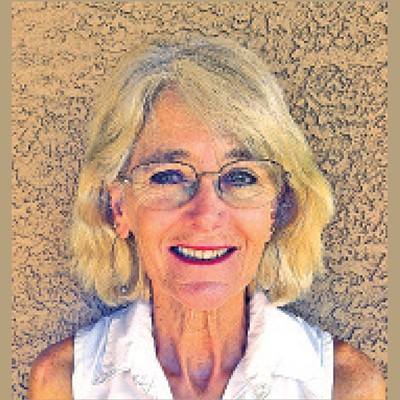A man from Tucson has died. His paid obituary, published in early September, is incomplete and unaccompanied by a photo. It does not reveal a cause of death.
Seventeen years ago, this man owned a dive boat in San Carlos, Sonora, and on New Year's Day 1990, while he was in Tucson, his boat set out for San Pedro Nolasco Island, a four-hour trip, and didn't return.
Twelve people died, including nine who lived in--or had strong ties to--Tucson, along with three crewmembers from Sonora. One Tucsonan and one Mexican were rescued a day later from 55-degree waters.
The owner of the boat had ignored safety procedures, such as having an emergency transmitter beacon on board, but so did everyone, he explained. Was the boat seaworthy? Yes, he insisted, for he personally had converted the fishing trawler to a dive boat. No, said others who had been on board and believed its permanent list would not withstand waves in the Sea of Cortez.
Lawsuits ensued. The diving community chimed in on possible causes. Emergency procedures were updated for boats in distress.
So here's what you, the editor, faces: (A) the death of a Tucson boat owner whose negligence or bad luck led to loss of life; and (B) the death of a man whose boat sank and killed nine people with intimate ties to your city.
And here's the answer in any American newsroom: If only A or B were true, the story is a must-do. If both A and B were true, which they are, not writing a story is a flagrant breach of public trust.
So, when Lane Larson, owner of Caiman Expeditions, whose boat, the Santa Barbara, sank, it stands to reason that the dailies jumped on the story for both reasons.
Quash the assumption.
Why? Would it have been a hard story to report?
Probably. Seventeen years ago, Lane Larson was an elusive, reluctant interview subject. Today, information about his death is--not surprisingly--vague. (Not even his age is listed in the paid obituary.)
Keeping the cloak in place, the Larson family didn't respond to a registered letter from me. Nor did Wanda Larson, Lane's wife, respond to an e-mail with a confirmed receipt. The past, like the victims of the capsizing, should remain submerged, no? Years before the Santa Barbara capsized, a man under Larson's supervision was killed in a Salt River rafting trip. Larson hadn't wanted to talk about that death, either, when this reporter spoke to him.
If the Larsons seek secretiveness, in death or in life, then the dailies must oblige, the cynical might conclude. Or maybe newspapers are too busy solving the world's problems by assigning teams of reporters to cover lofty topics away from Tucson.
Did the papers ignore the public interest? Sure.
Were they lazy? Yes.
The Weekly called the dailies' newsrooms on Monday and asked both to explain the lack of coverage. Queries to Citizen editor and publisher Mike Chihak and city editor Diane Luber; and to Star reader advocate Debbie Kornmiller and metro editor Hipolito Corella went unanswered, as of our deadline.
No comment? Isn't that what papers decry in others?
Lesson: Scrutiny is a good thing when it is you--the dailies--that get to apply it. Scrutiny is a nuisance when someone else shines the light on a timid, flaccid or inept news operation.










